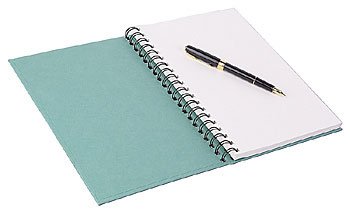I think NASA has been holding out on us. Wait, hear me out. I’m
sure all of you have heard about Lisa Nowak, the astronaut who
drove 900 miles wearing a diaper so she could allegedly harm her
romantic rival.
I think NASA has been holding out on us. Wait, hear me out. I’m sure all of you have heard about Lisa Nowak, the astronaut who drove 900 miles wearing a diaper so she could allegedly harm her romantic rival.
I’m not going to comment on Nowak or her sad story. I just wonder about the diaper. Frankly, I thought that was the weirdest part of the whole thing. Really, how many adults do you know who voluntarily wear diapers? Once a human is potty-trained, we pretty much don’t ever want to go back to wearing a wet, soggy thing that messes up the look of our best butt-hugging jeans.
Oh sure, some of us do go back to the diapers – it’s like a circle of life. You start out in Pampers and sometimes you end on Depends. But no matter which end of the diaper you’re on, nobody really likes them. There’s too much “ick” factor associated with diapers. They stink, they’re soggy, they produce horrible diaper rash if they aren’t changed every two minutes and they clog our landfills.
But astronauts wear them. And there has to be a reason. I don’t mean the old “oh, it’s better for take off,” or “have you seen a space shuttle bathroom? It literally sucks the stuff out of you,” reasons. These diapers must be super-duper, space diapers. Maybe they were created from alien diaper technology found at Roswell.
OK, maybe not. But there has to be a reason to choose a diaper over a rest stop. I know some stations have questionable bathroom sanitation policies – but let’s be real, that’s why men stand up and women invented the hover method.
And time-wise, how much was Nowak saving? She was traveling alone. So that means she only had to obey her bladder’s demands – not the demands of several people’s bladders. So, what’s she saving, an hour?
Frankly, you’d have to be saving a lot more time than that to make me wear a diaper for 900 miles. And that’s why I think NASA is holding out on us. Look, that must be some kind of diaper, right? It’s one that would hold up for around 14 hours of drive time. And honestly, it has to be some sort of super-space diaper because 14 hours of soggy diaper is guaranteed to produce a diaper rash, not to mention stink and discomfort.
So I’m thinking this is a diaper that every mother in America would buy no matter what the cost. Imagine it. With an ordinary diaper, you know right away if your darling toddler has soiled it. But with NASA’s super diaper, nobody has to know. You can walk the grocery aisles with a stinky baby and nobody will pass by, sniff, gag and yell, “hey lady, change that thing, will ya?”
And obviously, diaper rash is a thing of the past. No more smoothing butt balm on a squirming toddler tushy. With NASA super diapers, you just let the kid wear it until the diaper falls off because it’s so heavy. And voila! The tushy is still as soft as … well, as soft as a baby’s bottom.
And since they come in adult sizes, there’s something for everyone. No more airplane bathrooms. No, you will never again have to maneuver to the back of the plane, use the restroom and then stand in the aisle for the rest of the flight because you had the misfortune to use the lavatory just as the flight attendant wheeled out the drink cart. With NASA’s super diapers, you can drink all the water you want while flying to the other side of the world.
Road-trip pit stops would be a thing of the past. No more hover method for the ladies. Nope, we’ll just strap on our super diapers and drive across country. Of course, there is that pesky landfill issue. After all, if the diapers are so comfy that NASA can convince highly intelligent astronauts to wear them, it’s a safe bet that everyone will want them. And then what will we do? Our landfills will be overflowing with super diapers.
We can only hope that the super diaper technology that made these diapers comfy and smell-free also comes with super diaper quick decomposition technology that allows them to sit in a landfill for only two minutes before they turn into compost or something.
Because I’m telling you, now that the secret of NASA’s super diapers is out, everyone’s going to want them.













